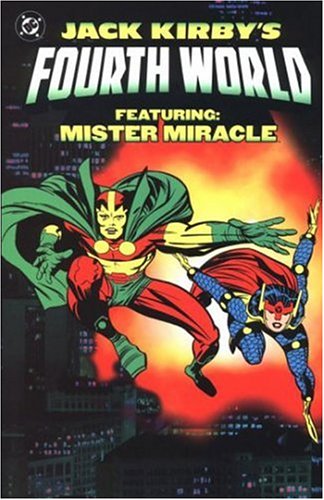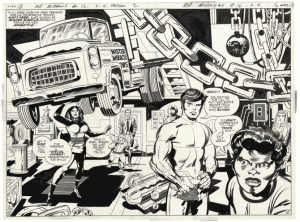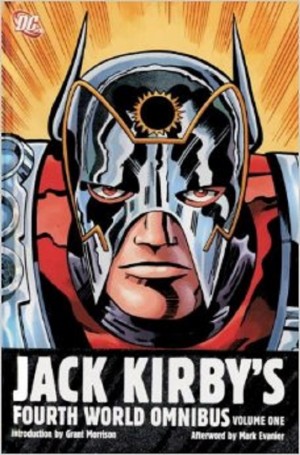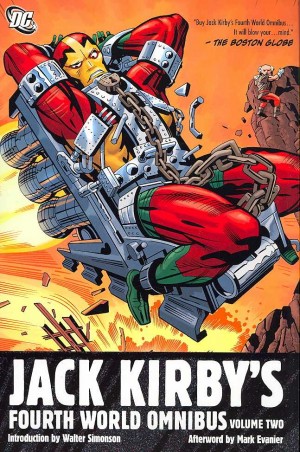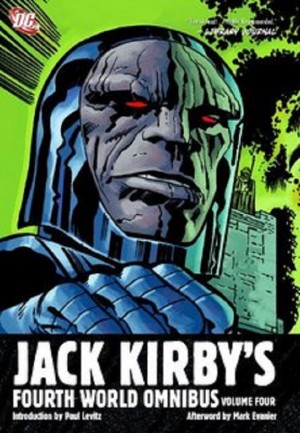Review by Graham Johnstone
Mister Miracle reprinted the first ten issues of Jack Kirby’s 1970s series. This companion volume, confusingly titled Jack Kirby’s Fourth World featuring Mr Miracle, reprints the remainder.
Kirby was the top artist at Marvel in the 1960s, co-creating, and plotting primary titles, but painfully unhappy there at his lack of credit. He spent two years negotiating a move to DC. The resulting deal let him create The Fourth World of the title: a suite of interlocking new series – including New Gods, Forever People, and this one.
As detailed in the previous volume, Scott Free was born on the Fourth World planet Apokalips. He escapes to Earth, where he takes the identity of recently deceased escape artist Mister Miracle. It’s somewhat contrived, but great fuel for Kirby’s visual imagination, and most stories begin with the latest elaborate trap Scott has to escape from.
Was Kirby getting the creative freedom, success and recognition he deserved? Tragically not. His titles failed to sell, within a year the others were cancelled and Kirby had to untangle Mister Miracle from the collapsed Fourth World continuity. In this volume, the stories are more standard fare of hero versus this month’s menace.
The introduction by Mark Evanier, Kirby’s assistant on these stories, and later biographer, offers rare insight into Kirby, noting he sometimes struggled, and worked through his feelings in his work. In that light, the second story seems poignant in it’s subtext: ‘Mystivac’ hypnotises Scott to want to die, and he passively fails to escape the latest death-defying trap. Thankfully his companion Barda (reputedly based on Kirby’s own wife) senses something wrong and acts in time. The cover of a later issue shows Miracle tied to train tracks, as a bystander shouts “Stop Him! He’s committing suicide!” Escape artistry is revealed as a more sophisticated Russian roulette – gambling, or even flirting with death. But let’s not read too much into that, or the scene where Scott is trapped by a giant set of nut-crackers wielded by Barda!
If the oppressively upbeat regime of Granny Goodness reflected Kirby’s feelings at Marvel, by this stage the foes are harder to identify and understand: Mystivac is presented as a third world idol, then seems to be a robot, and later an alien, but all along is the tool of of an idle rich ‘sportsman’. Similarly in ‘The Quick and the Dead’ what appear to be supernatural foes turn out to be more earthly, but still it revolves around powers of hypnosis, and illusion. In this and ‘Murder Lodge’ the whole environment is hostile with walls opening for adversaries to attack. ‘Insectosapiens’ again focusses on disappearing foes created by a master of illusion.
Perhaps it’s true to Kirby’s experience that these stories aren’t resolved in terms of theme, or even plot. In the earlier stories Scott’s ‘mother box’ seemed to suddenly have whatever power was needed. Here he’s worked the tech into his mask, There are at least four stories with a scene of Scott showing the mask circuitry as explanation for the latest miraculous feat.
The artwork, all with Kirby’s preferred inker Mike Royer, is very good. Both volumes are printed in greyscale. On the first volume the tones added coherence to the often frenetic artwork. Here, there are too many similar tones, often creating a murky sea of grey.
This material is only collected in these two volumes, or spread across the four deluxe Fourth World hardbacks.
